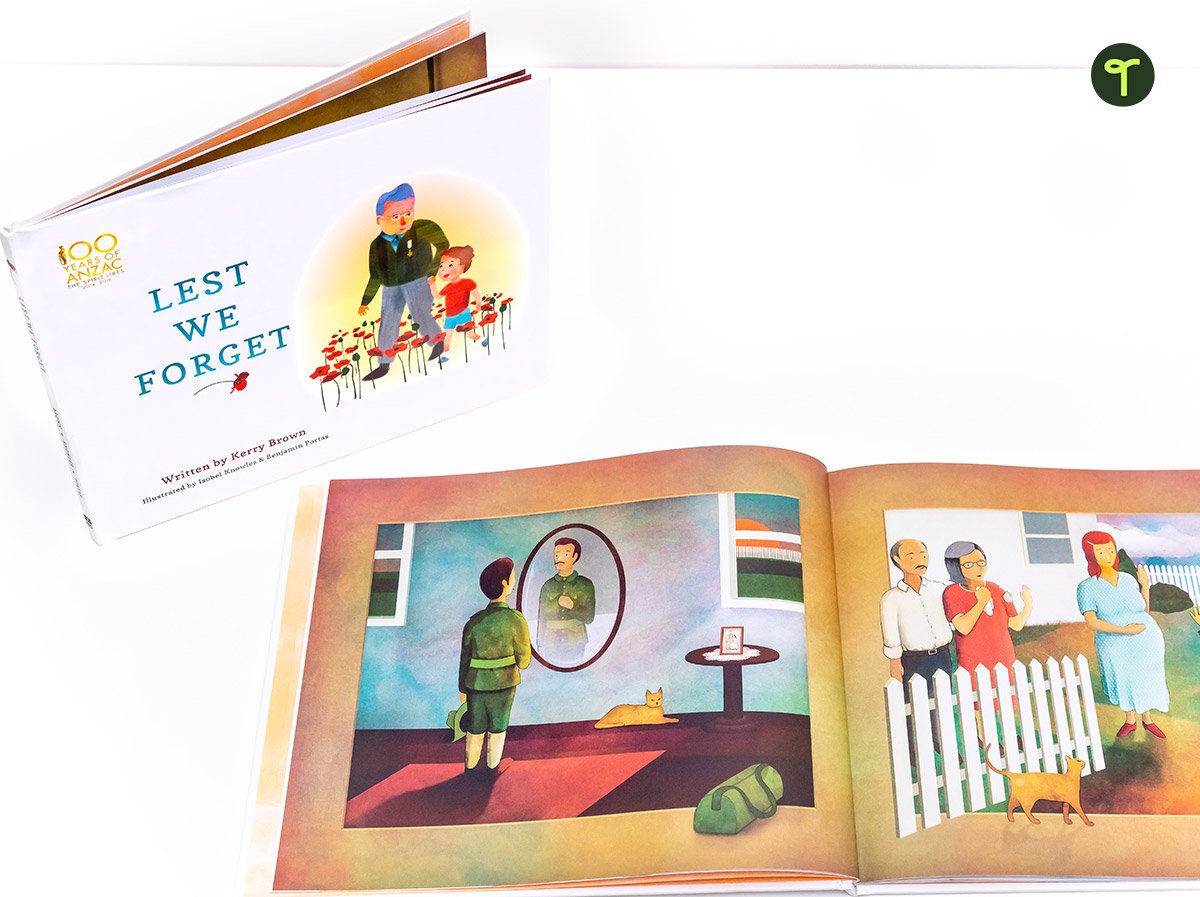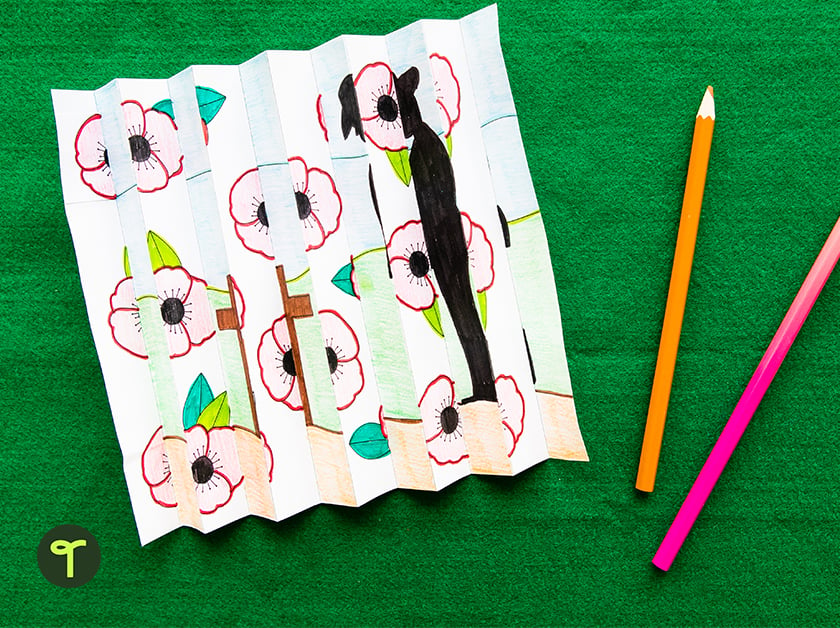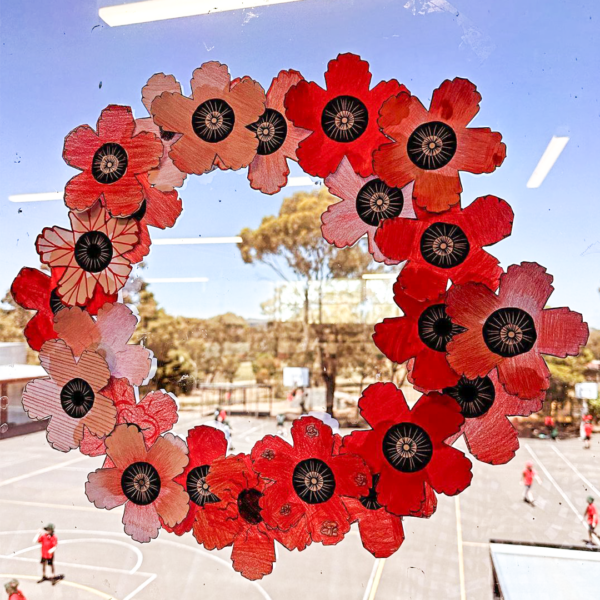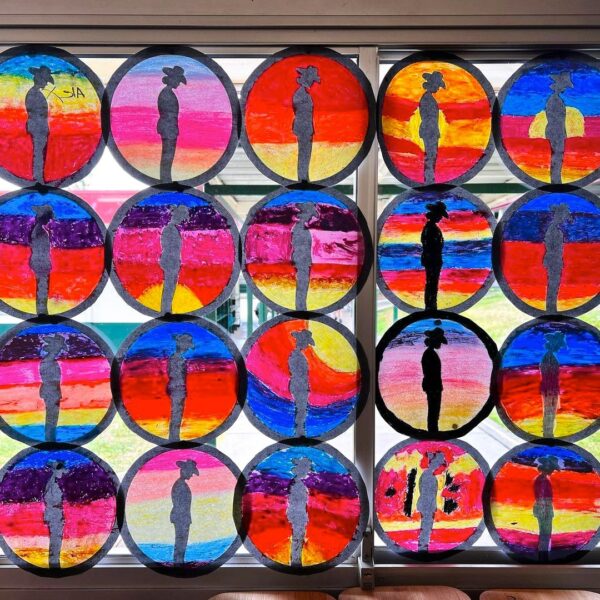If you’re searching for Anzac Day activities to teach kids about this meaningful day, you’ve come to the right place. While primary school students might see this public holiday as a chance to sleep in or hang out with friends, it’s our job as teachers to communicate the importance of Anzac Day and the significant roles that service men and women had during the war and today.
The Teach Starter teacher team has put their heads together and collated a bunch of Anzac Day activity ideas to help commemorate the day in the lead-up to the day. Read on to learn how to explain Anzac Day to kids, craft ideas, writing prompts and book recommendations for all year levels.
Short on time? Skip directly to our teacher-created Anzac Day printables and activities collection!
How Do You Explain Anzac Day to Kids?
No doubt your primary students have heard of Anzac Day, but you’ll want to be sure they truly understand it before you pull out any books or classroom activities.
This public holiday began as a way to commemorate the bravery and sacrifice of the Australian and New Zealand Army Corps members during World War I, but now it is both a celebration and a commemoration.
To explain this to kids, you might want to highlight that Anzac Day is a time for Australians and New Zealanders to remember and pay respect to the brave soldiers who fought for their country and the values they held dear. It is also a time to reflect on the importance of peace and remember the impact of war on soldiers and their families.
You can also emphasise the values of bravery, courage, mateship, and sacrifice that the ANZACs embodied and how these values continue to be celebrated and upheld in contemporary Australia and New Zealand.
This video explains the day in a kid-friendly way appropriate for sharing with all year levels:
Planning a school assembly for Anzac Day? This 10-slide Anzac Day Assembly PowerPoint template is easy to edit and already includes an overview of Anzac Day to save you time! The teaching presentation covers the following key information:
- What is Anzac Day?
- What Happened on the First Anzac Day?
- Why is Anzac Day Important?
- How Can We Commemorate Anzac Day?
Anzac Day Craft Ideas for the Classroom
Here are just a few of our teacher team’s favourite craft ideas for Anzac Day in the classroom!
Highlight the Differences Between Anzac Day and Remembrance Day
This tip comes from teacher Sarah Carter, a Teach Starter ambassador. While working on Teach Starter’s collaborative Remembrance Day quilt with her year 1 class, Carter says she recognised some students were confused about the differences between these two important dates, and she advises making the distinction for your students.
‘I spoke about my great grandfather who was in WWI and where the battles he was in were,’ Carter says. ‘Even more so with the current state of our world, my students were more understanding and thankful for the country we live in, call home and what our soil sets who served have done for us.’
Take a peek at her class’ colourful quilt, and download your own poppy quilt template!
Photo courtesy of NSW teacher Sarah of @heyy_mrscarter.
Introduce Students to the Poppy Symbol
The poppy is used around the world to symbolise the sacrifice of soldiers on the battlefield, and it has become a tradition to wear poppies on both Anzac Day and Remembrance Day. With that in mind, a poppy craft is a good way to introduce this important symbol in a child-appropriate way.
Emphasise to your class that the poppy is a way to honour and remember the sacrifices of all soldiers and to pay respect to their service and bravery. By wearing a poppy, people show their support for those who have served their country and commemorate the losses and sacrifices that have been made in times of war.
One of our teacher team’s favourite poppy crafts involves creating an optical illusion in the form of an agamograph (also called a lenticular!).
You can download the colouring template for our Poppy and Soldier agamograph to print for your class.
Create Anzac Day Wreaths
The wreath is a traditional tribute to Anzac Day services, and creating your own versions with your class is a wonderful way to pay tribute to our armed forces.
Anzac Day wreaths are traditionally woven with laurel leaves, which were used as a symbol of honour as far back as the ancient Romans to crown victors and the brave. The wreaths are also traditionally adorned with red poppies.
Download this Anzac Day Wreath template, and have students colour in the first template or they can colour the individual poppy, wreath, and leaves and sign and stick it all together themselves.
If you’re feeling extra crafty, why not get your class to make their own wreath? Teacher librarian Kate used our Red Poppy Template to create this bright wreath to decorate a classroom window and pay respect to our ANZAC soldiers.
Photo courtesy of Aussie teacher librarian Kate of @2edukate.
Make Soldier Silhouettes
Speaking of window displays, our teacher-fave Soldier Silhouette Art Templates are always a hit for Anzac Day.
You won’t need many supplies, and the completed artwork will look stunning on a window or door. Here’s how to get started:
- Create a sunset background using oil pastels, paint, coloured cellophane or tissue paper.
- Cut out the template and glue it on top of the sunset.
- Trim the edges of the background to match the template (i.e. trim around the outside of the circular template, or trim the sides of the rectangle template).
Photo courtesy of QLD Year 5 teacher Caitlin of @educatingwithenthusiasm.
Decorate Your Classroom Walls
If you’re short on window space but have a wall to spare, why not set up an Anzac Day display to commemorate the day? Teacher Bec got her class to create a beautiful collaborative artwork for the classroom, surrounded by a field of poppy writing templates.
We’ve got plenty of Anzac Day craft ideas to brighten your Anzac Display, so be sure to explore the collection here.
Photo courtesy of Aussie Year 3 teacher Bec of @thestarclass.
More Anzac Day Learning Activities
Host a Morning Tea with Anzac Biscuits
In the lead-up to the day, you can treat your class to a morning tea to share Anzac biscuits and use it as an opportunity to chat about the history of these biscuits during wartime. You can talk about the fact that the original Anzac biscuits used to be square in shape and so hard that soldiers joked they could break their teeth on them!
You could even take it a step further and make the biscuits as a class using our Anzac Biscuit Recipe as a guide.
Go on an Excursion to a War Memorial
Many towns and cities across Australia have a dedicated war memorial park or precinct, such as Anzac Square in Brisbane City or The Shrine of Remembrance in Melbourne, which are excellent locations for a class excursion. Teachers in Canberra, might consider a visit to the Australian War Memorial. Encourage students to walk around the memorial site and read information plaques before sitting down to do a reflection activity.
Invite a Guest Speaker to the School
A great way for students to gain first-hand insight into life during wartime is by inviting a guest speaker. Your guest speaker could be a WWII veteran, current military serviceman or woman, or a representative from your local RSL or Anzac Day commemoration organisation to talk to the school about their experiences or the significance of Anzac Day.
Discuss Anzac Day Vocabulary
Anzac Day represents a good time to explore new vocabulary with your students including words like trench and battlefield. Why not create a visual reminder of the vocabulary your students learn with an Anzac Day Word Wall designed by our teacher team to help you create a wonderful Anzac Day display?
Explore Anzac Day Writing Activities
Teaching new vocabulary is only half of the lesson! Challenge your young writers to put their new word knowledge into action.
You can use this Reflections on Anzac Day Template to help your students reflect on the meaning of Anzac Day to them or to put themselves in a soldier’s shoes by completing a Letter from the Trenches. Students can pretend to be a soldier or nurse, writing home to their loved ones.
For a historical twist, stain your letters with teabags after they’ve been written and display them in your classroom alongside your Anzac Day Word Wall!
Answer Common Anzac Day Questions
Over the years, our teacher team has encountered plenty of curious questions from kids on this important day. Here are some that we can recall, along with answers that will help you be prepared!
Why Do People Wear Rosemary on Anzac Day?
The herb rosemary is one of the many symbols that has been associated with this important day. But why rosemary? The tradition of wearing a sprig of rosemary in both Australia and New Zealand on this day is believed to have originated from the battlefields of Gallipoli during World War I. The reason goes back to a legend that the scent of rosemary was often present on the Gallipoli peninsula, and soldiers would sometimes place sprigs of the herb in their hats for good luck and as a reminder of home.
This is a good example of a story that has been passed down but may not be completely truthful, and you might use this as an opportunity to talk about primary and secondary sources of information!
Why Are Flags Lowered to Half Mast on Anzac Day?
Do you have a flag at your school that’s been lowered halfway? Students may notice it goes up and down and wonder why. Take the opportunity to explain what this is called and why it happens.
Flags are lowered to half-mast on certain days as a sign of respect and mourning for those who have lost their lives in war. This tradition is observed in many countries around the world as a mark of solemn remembrance for fallen soldiers.
On Anzac Day specifically, the flag is raised to the top of the flagpole at dawn and then lowered to half-mast until midday. The lowering of the flag symbolises the lowering of the colours in honour of the fallen. This is known as the Dawn Service. It’s a significant part of the day’s commemorative events.
Anzac Day Books for Kids to Read in the Classroom
Picture books are a powerful way of introducing and explaining Anzac Day to children.
- Before reading an Anzac Day picture book to your students, start a conversation with them about what Anzac Day means to them and the significance they think it has to our nation.
- While reading, stop and reflect on the events taking place along the way, and imagine with your students how the characters may be feeling.
- After reading, identify the important message that the author has presented in the book, then engage students with an activity that connects the students with the author’s purpose or a personal experience they have had.
This picture book is about a boy and his grandfather, who helped the reader understand the significance of ANZAC Day. Lest We Forget by Kerry Brown is one of our top picks!

Here are a few more examples of books you may like to find to share with your students this Anzac Day.
Most of them can be found at your local library, or you may like to check with your teacher librarian for help to track them down. Perhaps some of these books are floating around your school library! Are there Amazon links to include with each title? Or another website where they can be purchased?
Lower Primary Anzac Day Books
- Anzac Ted by Belinda Landsberry
- The Anzac Puppy by Peter Millett
- The Little Stowaway by Vicki Bennett and Tull Suwannakit
Middle Primary Anzac Day Books
- Gallipoli by Kerry Greenwood
- My Grandad Marches On Anzac Day by Catriona Hoy
- ANZAC Biscuits by Phil Cummings and Owen Swan
- Lone Pine by Susie Brown and Margaret Warner
Upper Primary Anzac Day Books
- In Flanders Fields by Norman Jorgensen
- Memorial by Gary Crew and Shaun Tan
- Simpson and His Donkey by Mark Greenwood
















Thank you for sharing my photo! A great blog-post, so many wonderful resources.
Fabulous resource. Thank you.
Thanks so much, Andrea. We are glad you're finding these ideas and resources helpful.